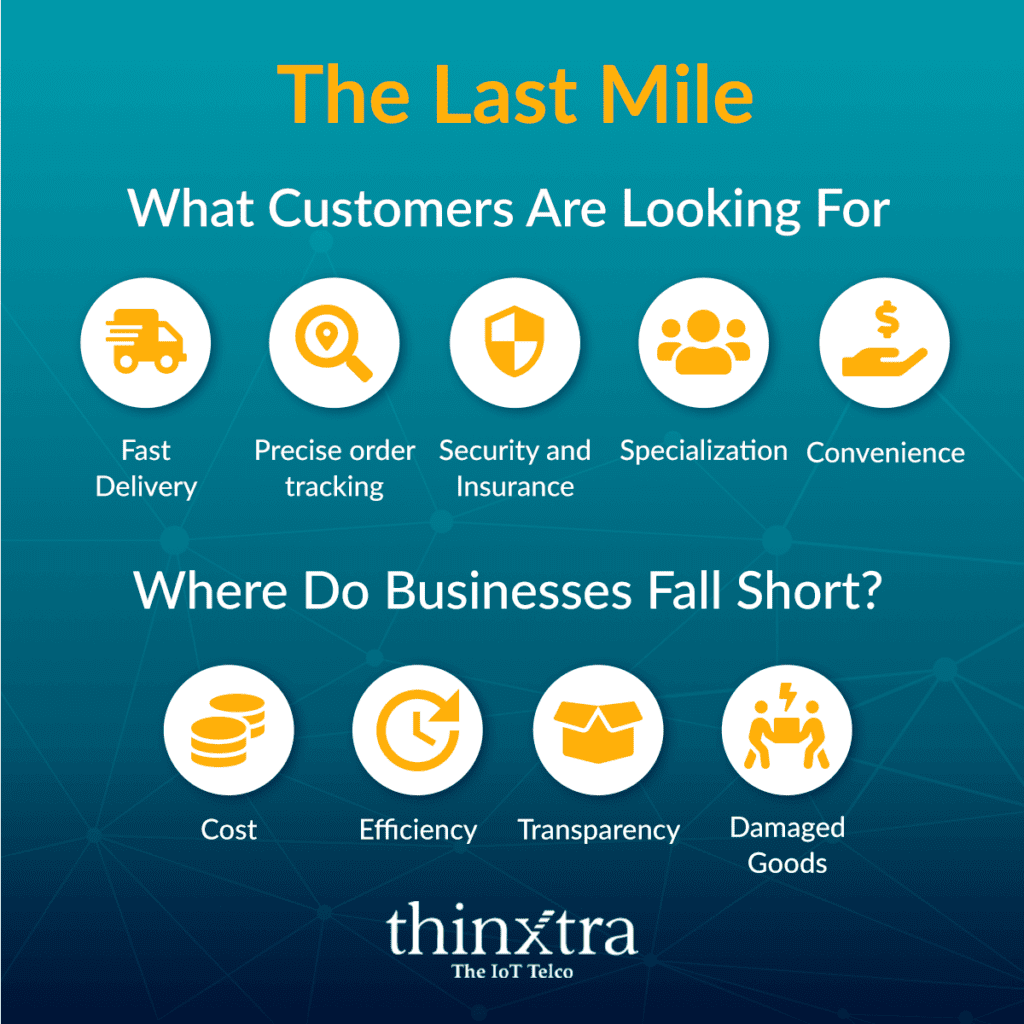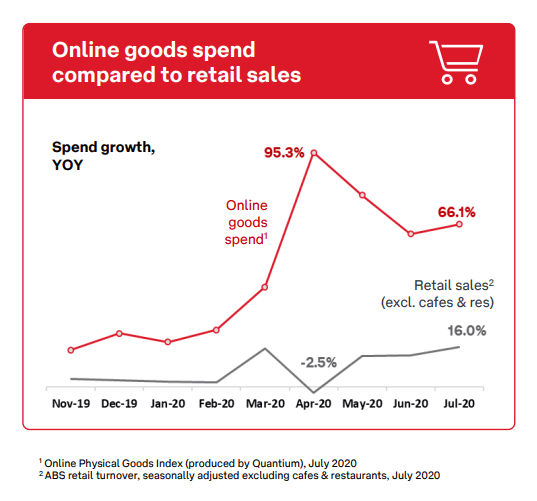From Loic Barancourt, CEO, Thinxtra, The IoT Telco
Over the last couple of weeks, I purchased soccer boots and shin pads from the US and a TV from a local retailer.
The common denominator with all three was they all told me they would take approximately a month, and possibly longer, to arrive.
Less than five days later, all my purchases had arrived.
A nice surprise – but had I been impatient for these items, I would have looked elsewhere for another retailer who could promise faster delivery or importantly, better predict my delivery time.
I may have even paid a premium for faster, more-certain delivery information.
The last six months have brought every consumer closer to the supply chain.
And I think they understand a little more about how important supply chains are. They may not know about the day to day operations, but they know when essential items are missing in shops, that parcels might take longer to arrive, and that some items are (or were) simply not available.
Consumers now have a sharpened understanding of business’ dependence on supply chains running smoothly.
Things have also changed for supply chain executives challenged to make their operations more resilient. There is a huge shift from decades of cost cutting and optimising leaner processes, to the business mandate of building strategic operational capabilities that create resilience and more value for customers.
As such, supply chain leaders are now planning changes to increase speed, agility and resilience in their networks.
They are more open to new ideas.
And many have realised that the key to their success will be greater visibility and control over assets.
It is almost too simplistic. You can’t manage what you can’t monitor. Control and the ability to make better, timely decisions demands knowing everything about your supply chain assets. Where they are and how they are doing.
Perfecting the Last Mile with Track, Trace & Tell
Having the control and data insights needed to deliver a reliable service and manage operational cost can, ultimately, come only from knowing where assets are as they move through the supply chain.
Analysing historical shipments can play its part, but modelling is only a reasonable estimate of the likelihood that something is where it should be. It’s a bit like driving the car by looking into the rear vision mirror.
To deliver goods or parcels from the distribution centre to consumers, day in and day out, is more challenging by definition than making larger shipments to a store. It’s also more costly, inefficient and the highest contributor, relatively speaking, to carbon emissions.
But the global boom in parcel delivery is not showing any signs of slowing. Quite the opposite. People are buying the same amounts of goods, they are just buying them online instead of in-store. And this means physically more pressure on ‘the last mile’ of delivery.
What’s also changed is that now, every one of us who wants, for example new shin pads, goes online to do so, with a new set of expectations that they will be in-stock, and can be delivered with certainty.
For the eight weeks following the World Health Organisation’s pandemic announcement, eCommerce growth was up 80% YOY in Australia. From March to August 2020, 8.1m+ households shopped online, up 16% YOY and 900k+ new households shopped online for the first time, up 34.4% YOY.


Smart Company reports that 85% of Australians expect their online goods to be delivered in three days; 85% expect retailers to have a same-day option; and yet only around 30% of local retailers can deliver this.
That’s why businesses like Australia Post are investing $300m+ a year to transform their businesses with a major focus on network automation and expanded processing and delivery capacity – because they know there’s going to be more strain on their parcel delivery service in the years to come.
The supply chain of tomorrow will need to perfect last mile delivery.
A recent survey of supply chain leaders by Microsoft and Bain & Company found their top priorities over the course of the next year include:
- Omnichannel
- Demand forecasting
- Greater flexibility in operations
Key to improving all these areas is real-time supply chain visibility, so decision makers know where their assets are and how they are doing at any given time.
IoT can play a key role in this. As I explored in my previous article, IoT gives clarity, accountability, and the data required to make better decisions around assets, movements and logistics.
The first thing a warehouse manager would do in the morning is go and check physically how many roll cages – returnable packaging containers that carry parcels – they have, and then check that the physical count matches what their ERP system is telling them they need or they should have at hand to service today’s requirements.
Say they’re 50 short. That means they won’t be able to ship as many parcels as they should have today. Meanwhile, another depot 30km down the road may have a number of roll cages that have been sitting idle for days.
This may be a trivial example – but it can still stop the smooth running of a supply chain, enough to create unwanted delays, which can then take hours or days to catch up on.
Such errors are relatively easy to fix – if you have the information in real-time about where your assets are, in the detail you need, at the moment you need the information. All that’s needed is a simple ping, a message, sent by an IoT device attached to the roll cages, providing accurate count and location of the items.
Overcoming Barriers – Price and Security
Two main obstacles stand in the way of organisations adopting IoT solutions for mass asset tracking; the cost of networks and devices (27%) and security (57%), according to Trustwave.
To overcome these obstacles, supply chain businesses planning to increase investment in supply chain visibility and resilience need to consider next gen connectivity and IoT solutions that require lower upfront investment and recurring costs than traditional options.
For example, Thinxtra’s Sigfox 0G Network is a dedicated, public, low cost low-bandwidth wireless network specifically designed to connect simple, low-energy IoT devices to the internet.
This means that the value of tracking and tracing becomes viable for assets or goods from the value of $200.
It is highly secure by design and less susceptible to network attacks – making it ideal for IIoT applications. Anecdotally, there are talks at board level of mitigating cyber attacks’ impacts on supply chains particularly sensitive to DDOS attacks on ERP systems by relying on third party asset location solutions running on Thinxtra’s 0G Network.
In Europe, companies like Peugeot, Michelin and DHL have significantly increased supply chain operational efficiency with the Sigfox technology powering the global 0G network. And now that Thinxtra operates the first, public, national 0G Network infrastructure across Australia, New Zealand, Hong Kong and Macau, 0G-enabled solutions for mass IoT can be deployed locally, with proven success and global reach
In Australia, MHD Supply Chain News’ latest cover story features how LOSCAM Group fitted its Industrial Bulk Containers (IBCs) with an IoT enabled track & trace solution to unlock significant cost savings for its supply chain partner ASCAP by being able to reduce the amount of assets on hire in the network. As a result, loss ratios were reduced, utilisation rates increased, and customers were happier.
To achieve this level of asset visibility and control on a mass scale requires new thinking not only around IoT network choices, but also around how we use data.
We are all conditioned to believe ‘the more data the better’. But more data drives up the cost and complexity in the solution you’re building.
Sometimes 12 bytes of data is all you need to gain valuable information about assets and track, trace and tell their location and condition. Less is more.
The key is to know what data you really really need to get the value and not start with ill-informed technology choices.
The businesses that will control the supply chains of the future will use the right technology for their specific use case to gain the visibility they need to deliver flexible, transparent operations and a true competitive advantage.
And they will be able to charge a premium for the efficiency and accurate information that savvy customers so value.


